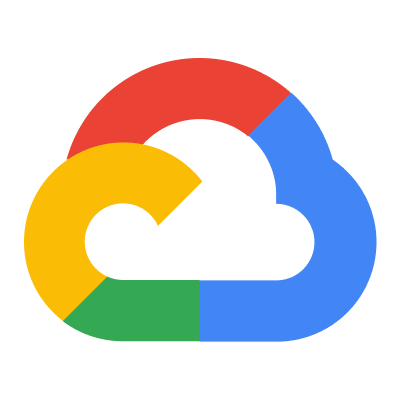Data Egress Costs Compared
How much does it cost to send data out of the cloud?
May 5, 2025 (updated) by @anthonynsimon
An often overlooked cost of using cloud services is data egress. This is the cost of sending data out of the cloud provider's network to the public internet.
Here's what 1 TB of egress beyond the free allowance would cost you with each provider:
| Cloud provider | Free allowance | 1 TB egress overage |
|---|---|---|
 UpCloud
UpCloud
|
-- | Free and unlimited 1-24 TB per instance, then lower bandwidth |
 Runpod
Runpod
|
-- | Free and unlimited |
 Civo
Civo
|
-- | Free and unlimited |
 Contabo
Contabo
|
10-324 TB per instance | Free and unlimited 10-324 TB per instance, then lower bandwidth |
 DataCrunch
DataCrunch
|
-- | Free and unlimited |
 Green AI Cloud
Green AI Cloud
|
-- | Free and unlimited |
 Hostinger
Hostinger
|
4-32 TB per instance | Free and unlimited 4-32 TB per instance, then lower bandwidth |
 Hyperstack
Hyperstack
|
-- | Free and unlimited |
 Lambda Labs
Lambda Labs
|
-- | Free and unlimited |
 OVH
OVH
|
-- | Free and unlimited Reduced bandwidth may apply |
 Paperspace
Paperspace
|
-- | Free and unlimited Burst up to 10 Gbps, then soft capped at 900 Mbps |
 The Cloud Minders
The Cloud Minders
|
-- | Free and unlimited |
 Wasabi
Wasabi
|
-- | Free and unlimited |
 Cloudflare
Cloudflare
|
-- | Free for most services |
 Scaleway
Scaleway
|
-- | Free for most services Bandwidth caps based on instance size |
 Heroku
Heroku
|
2 TB / mo per app | Not publicly listed Bandwidth is soft limited per app (2 TB / mo) |
 Hetzner
Hetzner
|
1-60 TB / mo per instance | $1.15 €1 / TB |
 Linode
Linode
|
1-20 TB / mo per instance | $5.00 $0.005 / GB |
 Oracle Cloud
Oracle Cloud
|
10 TB / mo | $8.50 $0.0085 / GB |
 Backblaze
Backblaze
|
3x the amount of data stored | $10.00 $0.01 / GB |
 Bunny CDN
Bunny CDN
|
-- | $10.00 $0.01 / GB (Standard tier North America) |
 DigitalOcean
DigitalOcean
|
100 GB - 10 TB / mo per instance | $10.00 $0.01 / GB |
 Entrywan
Entrywan
|
1 - 16 TB / mo | $10.00 $0.01 / GB |
 Vultr
Vultr
|
2 TB / mo for most services | $10.00 $0.01 / GB |
 Nebius
Nebius
|
100 GB | $15.00 $0.015 / GB |
 Cloudways
Cloudways
|
1-12 TB / mo | $20.00 $0.02 / GB (DO provider) |
 Database Mart
Database Mart
|
32 TB per instance | $20.00 Upgrade to 320 TB, 1 Gbps (shared) |
 Exoscale
Exoscale
|
1 TB / mo per instance | $20.00 $0.02 / GB |
 Fly.io
Fly.io
|
100 GB / mo | $20.00 $0.02 / GB (Public network North America) |
 Koyeb
Koyeb
|
100 GB / mo | $20.00 $0.02 / GB |
 Railway
Railway
|
-- | $50.00 $0.05 / GB |
 Alibaba Cloud
Alibaba Cloud
|
10 GB / mo | $74.00 $0.074 / GB |
 Azure
Azure
|
100 GB / mo | $87.00 $0.087 / GB (Premium network North America) |
 AWS
AWS
|
100 GB / mo | $90.00 $0.09 / GB (North America) |
 Sevalla
Sevalla
|
100 GB (static sites) | $100.00 $0.1 / GB |
 Zeabur
Zeabur
|
10-100 GB, depends on plan | $100.00 $0.1 / GB |
 GCP
GCP
|
Depends on service | $120.00 $0.12 / GB (Premium network) |
 Vercel
Vercel
|
100 GB - 1 TB, depends on plan | $150.00 $0.15 / GB (Edge) |
 Render
Render
|
100 GB - 1 TB, depends on plan | $300.00 Billed $30 / 100 GB |
 Netlify
Netlify
|
100 GB - 1 TB, depends on plan | $550.00 Billed $55 / 100 GB |
Prices may vary by region and other factors not listed here. For ease of comparison, I selected the region closest to North Virginia (USA) or Frankfurt (Germany), and I made several assumptions to come up with these estimates. Be sure to check the provider's pricing page for the most up-to-date information.
Understanding cloud egress
If you're a developer, chances are you've used cloud services for tasks like storing files, running your apps, or hosting websites.
These services are typically charged based on usage, but one of the costs you might not be aware of until you get your cloud bill is data egress.
It's important to understand how it works because data egress fees can quickly add up, especially when you plan on moving a lot of data around.
Let's break down what data egress is, how much it costs, and what you can do to keep your data egress costs down.
What is data egress?
Data egress is the term used to describe data leaving a network, more specifically, data leaving your cloud provider's network out to the public internet. This can be data sent from a cloud provider to a user, or data sent from one cloud provider to another.
Cloud providers typically charge for egress based on the amount of data sent out of their network, and it's usually measured in gigabytes (GB) or terabytes (TB) of data transfer per month.
Data egress vs ingress
From the cloud provider's perspective, there are two types of data transfer:
- Ingress: data entering a network. Typically free.
- Egress: data leaving a network. Typically charged.
In practice, it might look like this:
- When a user uploads a file to a cloud storage service, that's considered ingress to the cloud provider.
- When the user downloads the file, that's considered egress from the cloud provider.
To download the file, the user's device is requesting data from the cloud provider's network, and the cloud provider is sending the data out to the user (or to an intermediary like a content delivery network). This is where egress fees come into play.
Why do cloud providers charge for egress?
Cloud providers charge for egress because it costs them money to send data out of their network. They have to pay for the infrastructure and bandwidth required to send data to users.
It's also important to note that not all networks are created equal. Some cloud providers may have better peering agreements with ISPs or more reliable network infrastructure, which can affect the cost of egress too.
However, egress fees may also be used to discourage certain types of usage that may saturate the network, or constantly moving large amounts of data between cloud providers.
Keeping egress costs down
Most cloud providers do offer a certain amount of free egress each month. For example, as an account-wide allowance (eg. 100 GB / mo), or pooled across the number of servers you have with them (eg. 1 TB / mo per server).
So depending on your usage and the cloud provider you choose, you may be able to avoid egress fees altogether or keep them to a minimum.
Here are some additional factors to consider when trying to keep egress costs down:
- Content Delivery Network (CDN): Cache and serve static assets closer to your users. That way, you can reduce the amount of data transferred from your cloud provider to your users.
- Compression: Compress your data before sending it to reduce the amount of data transferred. Gzip and Brotli are popular compression algorithms.
- Data transfer pools: Consider using a cloud provider that offers a data transfer pool. This allows you to pool together the data transfer allowances of multiple services within the same account.
- Monitoring: Set up usage and billing alerts to notify you when you're approaching your free allowance or a certain threshold.
- Private networking: Your cloud provider may offer free egress for data transferred between services within the same data center or region when using a private network. However, do watch out for NAT gateway charges and other fees that may apply.
Conclusion
Data egress is the cost of sending data out of a cloud provider's network to the public internet. It's important to understand how it works because data egress fees can quickly add up, especially if you're moving a lot of data out of the cloud.
Not sure yet? Compare cloud providers to find the right fit for your project.